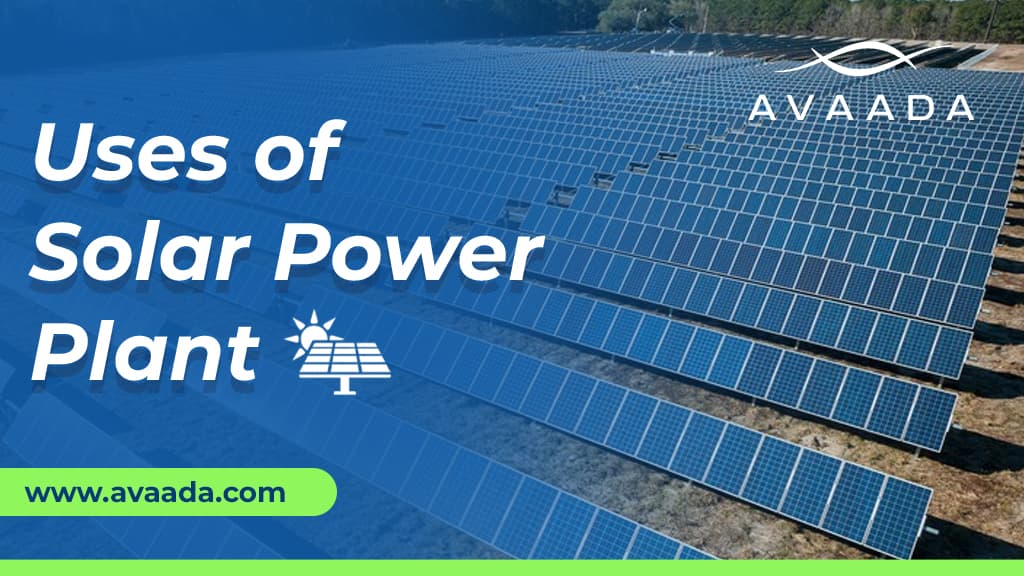Solar power plants have become a cornerstone of sustainable energy solutions worldwide. These installations capture the sun’s energy, providing clean, renewable power that can be used in various ways.
Below, we explore the diverse applications of solar power plants, highlighting some key examples to illustrate their impact.
1. Electricity Generation
The primary use of solar power plants is the generation of electricity. Solar photovoltaic (PV) systems convert sunlight directly into electricity, which can power homes, businesses, and even entire communities. This electricity can be stored in batteries for use when the sun is not shining or fed into the grid to supply power to a wider area.
For a deeper understanding of how these batteries work and their importance, you can read our blog on Battery Energy Storage Systems (BESS).
2. Commercial and Residential Buildings
Commercial and residential buildings can benefit from solar power plants by installing rooftop solar panels. These installations can significantly reduce electricity bills and contribute to a building’s energy independence.
Example: Many homeowners in sunny regions have installed rooftop solar panels to take advantage of net metering, where excess energy generated is fed back into the grid, earning credits on their electricity bills.
For those considering this investment, it’s crucial to select the right provider. To help with this decision, you can read our blog on the Important Checklist for Choosing the Top Solar EPC Company.
Example: Avaada’s solar projects, such as the 1,836 MW commissioned in Rajasthan and the additional 3,836 MW under implementation, significantly contribute to the energy needs of the region, reducing dependency on fossil fuels and promoting sustainable energy solutions.
3. Agricultural Applications
Solar power plants are increasingly being used in agriculture. Solar panels can power irrigation systems, reducing the reliance on diesel generators or grid electricity. Additionally, solar energy can be used for drying crops, which is more efficient and environmentally friendly compared to traditional methods.
3. Agricultural Applications
Solar power plants are increasingly being used in agriculture. Solar panels can power irrigation systems, reducing the reliance on diesel generators or grid electricity. Additionally, solar energy can be used for drying crops, which is more efficient and environmentally friendly compared to traditional methods.
4. Industrial Uses
Industries are also leveraging solar power to meet their energy needs. Solar power plants can provide the necessary electricity for manufacturing processes, reducing the carbon footprint of industrial operations.
Example: Tesla’s Gigafactory in Nevada utilizes solar energy to power its manufacturing of electric vehicle batteries, exemplifying how solar power can be integrated into large-scale industrial production.
5. Water Heating
Solar thermal power plants use the sun’s energy to heat water. This hot water can be used for residential, commercial, or industrial purposes, such as providing hot water for bathing, cleaning, or even in industrial processes where hot water or steam is required.
6. Solar Lighting
Solar power plants can also be used to provide lighting in remote or off-grid areas. Solar street lights, for instance, are becoming common in rural areas, enhancing safety and extending productive hours after sunset.
Example: In many African countries, solar street lights have been installed in rural communities, significantly improving nighttime visibility and safety while reducing the need for kerosene lamps, which are harmful to health and the environment.
7. Remote Power Supply
Solar power plants are ideal for providing electricity in remote areas where extending the grid would be too expensive or impractical. This application includes powering remote telecommunications equipment, off-grid homes, and remote research facilities.
8. Emergency Power Supply
In disaster-prone areas, solar power plants can provide a reliable backup power supply. During natural disasters, traditional power infrastructure can be damaged or destroyed. Solar power systems, especially those paired with battery storage, can provide essential electricity for emergency services and shelters.
9. Transport
Solar energy is being increasingly integrated into the transport sector. Solar-powered vehicles, including cars, buses, and even boats, are being developed and tested around the world. These vehicles utilize solar energy either directly from onboard panels or indirectly through solar-charged batteries.
Conclusion
The uses of solar power plants are vast and varied, offering sustainable solutions for electricity generation, agriculture, water heating, lighting, remote power supply, emergency power supply, transport, industrial applications, and residential and commercial buildings. As technology advances and the cost of solar installations continues to decrease, the adoption of solar power is expected to grow, bringing clean, renewable energy to more people around the world.









